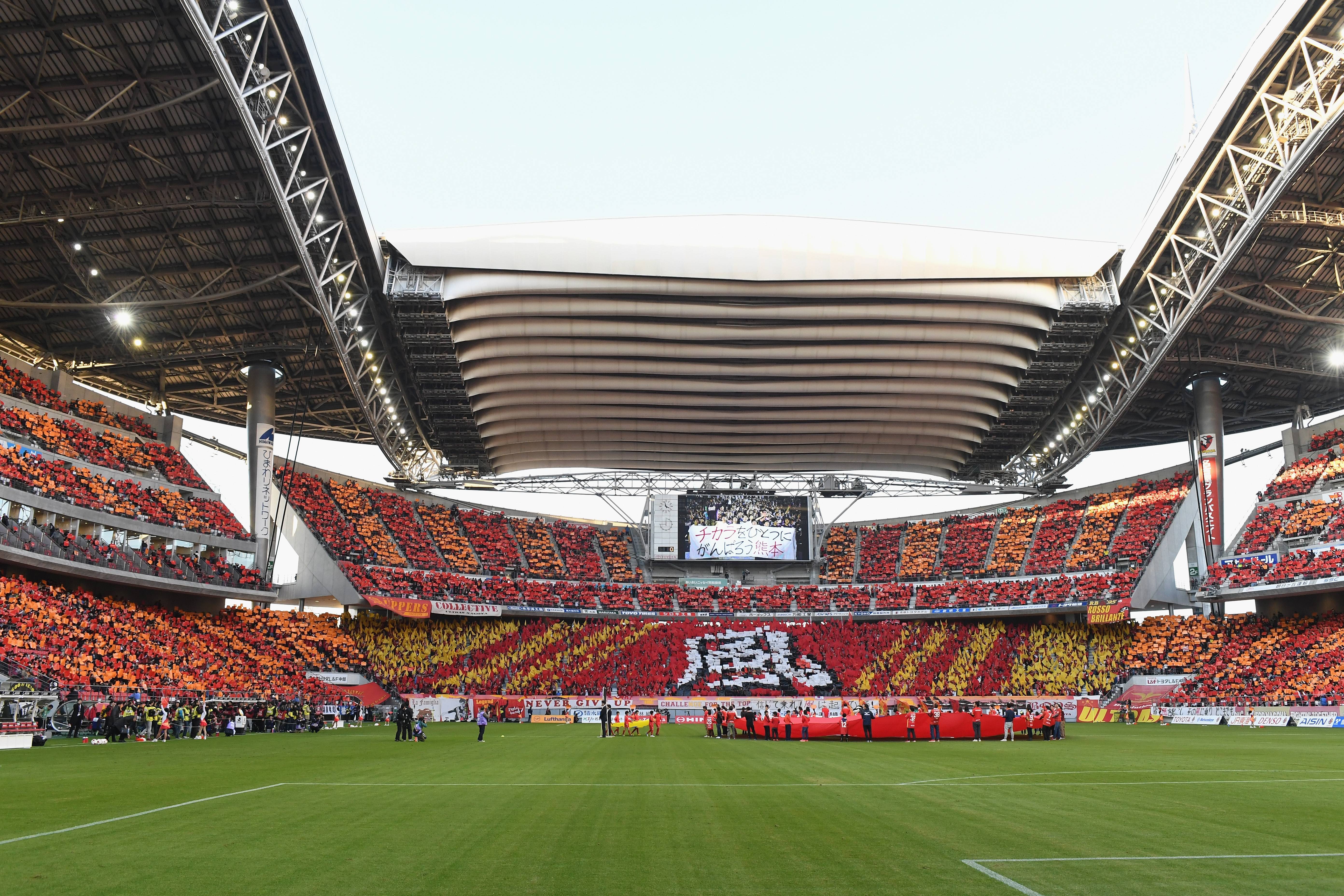
One of the best foreign strikers in the J.League, a defender and a midfielder with Japan National Team potential, and yet more players with Samurai Blue experience. No, I am not talking about Kashima Antlers, FC Tokyo or another other high-profile club. The topic of this column is Sagan Tosu, a club who often fly under the radar but have continuously surprised since their 2012 J1 debut.
Sagan Tosu are currently in sixth place, with a 2-2-1 record and the most effective offense in the league so far, tied with Shimizu S-Pulse at eight goals (a figure that may not seem high before considering that the current J1 season averages only 2.22 goals per match). The blue and pink were the most impressive side in the fifth round, mounting an incredible comeback from 2-0 behind to win against Nagoya Grampus in injury time. Manager Massimo Ficcadenti used that match to showcase his main weapons for this season, with a superb performance from Colombian star Víctor Ibarbo and good showings from Shuichi Gonda, Yutaka Yoshida, Hideto Takahashi, Riki Harakawa, Yuji Ono and Kyosuke Tagawa.
Ibarbo had a man-of-the-match-worthy performance not only for his goal and assist, but also for his magnificent ball-holding skills, which are second to none in Japan. The 27-year-old was almost released last year after failing to impress in his first J.League semester, but he has now become Sagan’s ace, just as Yohei Toyoda was for many years until 2016.
Another player worth mentioning is Yutaka Yoshida. The left-back of the London 2012 generation never convinced at Shimizu S-Pulse, but since transferring to Tosu has evolved into one of the country’s most reliable players at the position. His crossing and build-up skills are above average, but his defensive work rate sets him apart from other Japanese fullbacks. If Shintaro Kurumaya, Tomoya Ugajin and even Ryo Hatsuse and Sei Muroya have been called up by Halilhodzic recently, why hasn’t Yoshida gotten his chance? He is definitely not inferior to any of those players. Riki Harakawa is another Sagan regular with potential to join the Samurai Blue, but he will face a difficult battle to establish himself in a crowded midfield.
Since Ficcadenti arrived, Sagan have changed their transfer politics and actively hunted reinforcements in alternative markets. Of course, mistakes do happen and some foreign signings did not live up to expectations. Many supporters may have already forgotten the likes of Franco Sbuttoni, Aymen Tahar and Moestafa El Kabir. With Ibarbo, though, the Italian manager hit the bullseye.
Bringing back Japanese players from overseas has also worked with Gonda (Austria) and Ono (Belgium), now key members of the squad. Ryoya Ito (Germany) is one for the future, while the club’s most recent signing, Kohei Kato, is an interesting prospect as he even caught the attention of Halilhodzic while playing in Bulgaria. The club is also not afraid of pursuing big names, as shown by last season’s attempts of luring Hiroshi Kiyotake and Masato Morishige.
Neither should the club’s increasing support be overlooked. In 2017 Sagan saw their highest attendance ever, with a match average of 14,194 that topped the best efforts of Avispa Fukuoka, the J.League’s first Kyushu side. Sagan’s average of 16,782 in their first three home games of 2018 is also promising.
By maintaining their J1 presence, Sagan have established themselves as the best Kyushu side in Japan, having already equalled Oita Trinita’s record of seven consecutive seasons in the top flight (2003-09). Sagan are also the Kyushu club with the most points in J1 history – exactly 300 as of this writing, having surpassed Oita (287) and Fukuoka (229). Trinita, however, still hold the record for the best J1 finish by a Kyushu club (fourth place in 2008) and are the only team from the southern island to lift a major trophy, the 2008 J.League Cup.
The question remains: can Sagan Tosu compete with the J.League’s big guns and improve on their eighth-place finish of 2017? This month will be an important test for Ficcadenti’s men with matches against Cerezo Osaka, Kashiwa Reysol, Jubilo Iwata, Sanfrecce Hiroshima, Kawasaki Frontale and Gamba Osaka. It’s a daunting schedule, but a huge chance for players and club to step up and prove they deserve more recognition.
Tiago Bontempo is a Brazilian journalist specializing in Japanese football for Globo. He can be found on Twitter at @GunnerTNB





